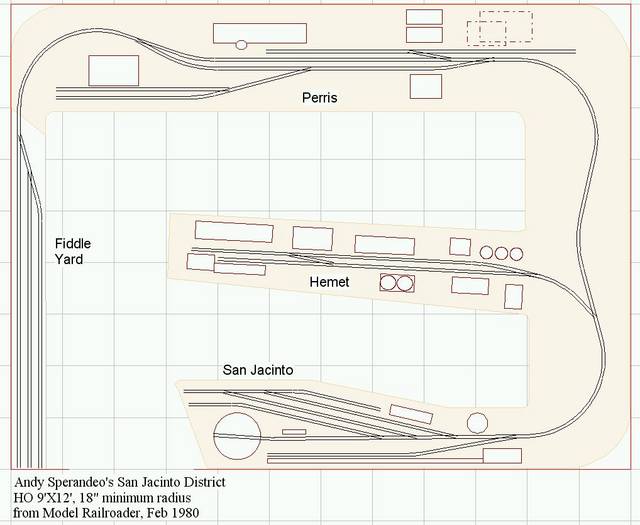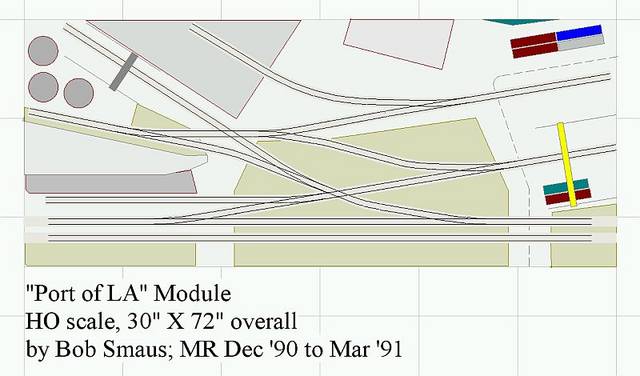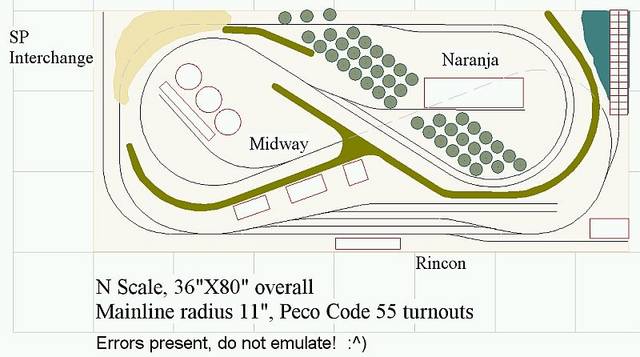I've been thinking a bit lately about the NMRA National Convention concept. I've attended three now, beginning in 1996 in Long Beach, then 2005 in Cincinnati and recently this year's event in Anaheim. The NMRA National is a bit of a model railroading smorgasbord, and I tend to graze the offerings, rather than indulge in all of it.
But that still leaves a lot of activities for me during the convention. Because I operate a modest model railroad-related business, the convention offers a chance to connect with current, past, and prospective clients, although much of that can be done through other means. I enjoy catching-up with friends from distant parts of the country and globe. I've always liked layout visits, but since I'm not one for bus tours, I usually only see layouts on the
Layout Design SIG self-guided tours. It's fun to offer some short layout design help sessions as part of the LDSIG's activities. And with all of these, the thing I enjoy most is presenting and attending clinics.
The Host Committee of the Los Angeles Division of the Pacific Southwest Region did a fine job of organization and I enjoyed the events and activities of the convention. I also took a brief turn around the National Train Show (held in conjunction with the convention) and saw a few interesting things, including the modular layout set-ups that are my favorite part of any train show.
I'm not well-connected with the volunteer leadership of the NMRA (now
there's a thankless job!), so I am not sure what their expectations were for attendance at the convention and participation by vendors at the National Train Show. But a few people were talking about the fact that the convention was more lightly-attended than hoped and that there weren't as many vendors at the train show as hoped-for. Part of this is probably that it was held on the west coast. I've certainly heard anecdotal reports that some attendees and vendors don't like to venture west of the Mississippi. (Of course, they don't mind asking those of us who live on the west coast to make the reciprocal trek.)
In any case, some of this discussion got me to thinking about the NMRA National Convention and what I would suggest to the NMRA if they were my marketing client and my task was to increase participation in the Convention. Now I don't know if any of the things I am going to mention are even possible to change or eliminate, or if there are reasons I'm not aware of that things are the way they are. So, unburdened by the constraints the NMRA likely actually faces, I'll blithely proceed to give my observations and opinions on four main points.
The hobby has changed
First, I think the hobby has changed in a fundamental way from the time that NMRA conventions began in 1935 and even from the 1960s and 1970s. There are a vastly broader range of interests, scales, backgrounds, products, etc., etc., than even a few years ago. This specialization of the hobby means that fewer of us are doing the exact same thing. There was a time when it seemed model railroading was almost entirely slightly whimsical western layouts. Then came the HO Appalachian coal haulers.
But today, we have eye-popping variety and more information than ever to let each of us explore our personal interests within the hobby even more deeply. Not just operations, but the intricacies of Time Table and Train Order. Not just diesel modeling, but duplicating exact phases of particular locomotives at a specific time and place. Not just a general interest in western prototypes, but participation in historical societies dedicated to preserving information on the day-to-day activities of a specific real-life railroad.
The NMRA National Convention is very tentatively beginning to become a "big tent" under which a number of specific groups offer activities, such as the Layout Design and
Operations Special Interest Groups, the Railroad Prototype Modelers, and others. This is a terrific change from a decade or so ago when the SIGs were seen as rivals to the NMRA (sometimes, by both sides!).
But these SIG functions are still ancillary activities, in some cases exclusively for existing members of the groups. The Convention could be a chance for the NMRA to highlight these groups and many more, better communicating the diversity in the hobby and attracting more participation though partnerships with the SIGs, historical societies, and the like. Why not work to bring the Toy Train fans, the Narrow Gaugers, the N Scalers together in some way for a "Convention of Conventions"? Bigger buzz, bigger crowds, bigger benefit for the hobby in the long term … even if each of these constituencies has to give something up in the short term.
The world has changed
Second, I think it is important to acknowledge that the world has changed. The growth of the Internet has implications for the Convention and the Train Show. With forums and email, meeting and staying in touch with like-minded model railroaders does not require a national face-to-face get-together once a year. We can instantly connect with other modelers and see images of what they are working on – even on a daily basis, if we choose. And the same is true of model railroading vendors. Even the smallest garage-shop manufacturer can put up a website for practically nothing and be accessible to modelers around the world. No need to spend the significant time and money on travel and a booth at the Train Show.
In both cases, the Internet removes some impetus for the Convention and Train Show but conversely creates a terrific tool for promotion and partnerships. I can't remember seeing a single on-line ad for Anaheim in 2008. It's a huge effort, perhaps too much for a volunteer organization, but the NMRA could do a much better job of reaching out through the Internet to the many varied constituencies to bring them together for a more engaging and interesting Convention.
The seasons change
Third, it's always seemed odd to me that the Convention and train show are held in (usually) July.
July! Not only is the weather a bit unpleasant (hot and/or muggy) almost anywhere in the US in July, it is the nadir of model railroading activity for most people. Typically people's model railroading juices get flowing in the fall and through the winter. I've been given two reasons for this date. One explanation is that this allows teachers and students to attend the Convention, which takes place during the week. The other is that convention facility costs are at their lowest in the middle of summer, when most people are on vacation.
Whatever the reasoning behind the July choice, I'm pretty sure that it doesn't make sense in today's world. People are more mobile, and even teachers can take time off in the fall and winter. Yes, students would have trouble participating during the week, but who says the Convention must take place primarily Monday through Friday (see below)? And most students would be better reached through the web and other activities than a convention that very, very few of them can afford, especially when travel is included. In my opinion, the Convention should move to the fall, when general modeling interest is higher.
Time for a change?
And the fourth topic to address, perhaps the elephant in the room, is the National Train Show. The Train Show dominates Friday and the weekend, which could be the prime days for people to participate in the Convention. It seems to me that the Train Show is the tail wagging the Convention dog. Now it may be that the fees the vendors pay to exhibit at the train show are an important component of the NMRA's operating budget, so maybe you gotta dance with the one that brung ya.
From its website, the National Train Show describes itself thusly: "The show's only purpose is to promote the hobby in a professional manner, to the hobby industry and to the public at large." Is this a mission that should still be carried out as a commercial show? Couldn't that be, indeed,
shouldn't that be, the purpose of the Convention? Should the NMRA with its Train Show be in competition with the other train shows around the country?
What would be the best use of the weekend of the Convention, if the goal is to increase the hobby? Wouldn't it be to put the best parts of the Convention into these prime hours, when more can attend? Aren't there enough other opportunities for manufacturers to communicate with the trade through the Internet, the annual
iHobby Expo (Rosemont) Show, and other venues? And aren't there plenty of opportunities for manufacturers to communicate to their customers though magazine ads, the Internet, and the multitude of other train shows that have sprung up in the last decade or two? The National Train Show only dates to 1988 and I don't know what preceded it. But I wonder if it isn't time to consider its relationship with the Convention and make some changes.
It won't change overnight
I recognize there is plenty of inertia to keep things as they are and I am not naive enough to think that this blog entry will change them. But even small steps toward creating a "bigger tent" of partnerships, using the Internet more effectively, changing to a more appropriate date, and considering how better to use the weekend days for the Convention itself could pay dividends. I've enjoyed my three NMRA National Conventions so far and hope to enjoy many more. These changes might make it attractive for many more to enjoy the Convention as well.
Thanks for reading all the way through. The
Inspirational Layouts series will return in the next post.
























 Let’s see… the
Let’s see… the